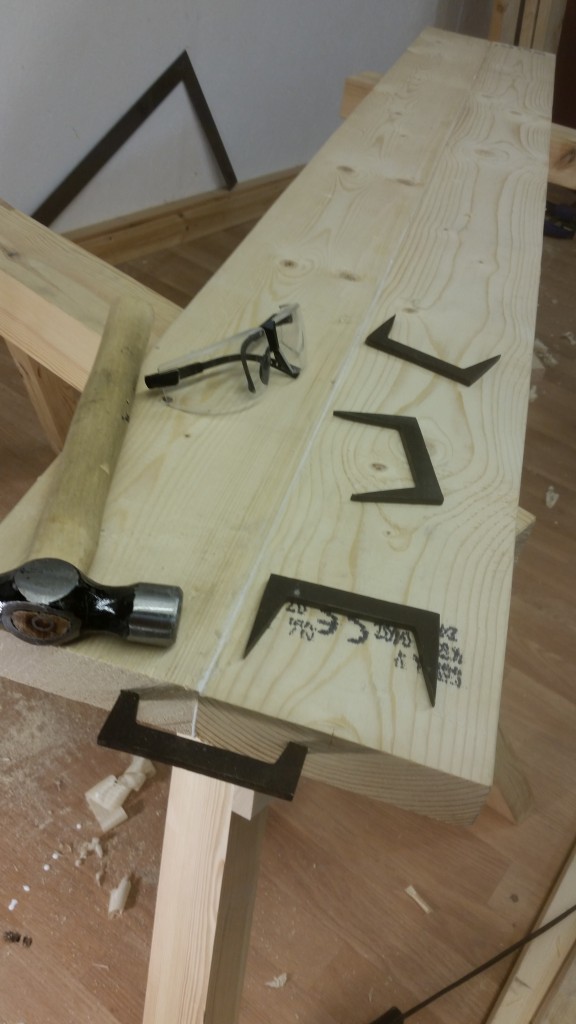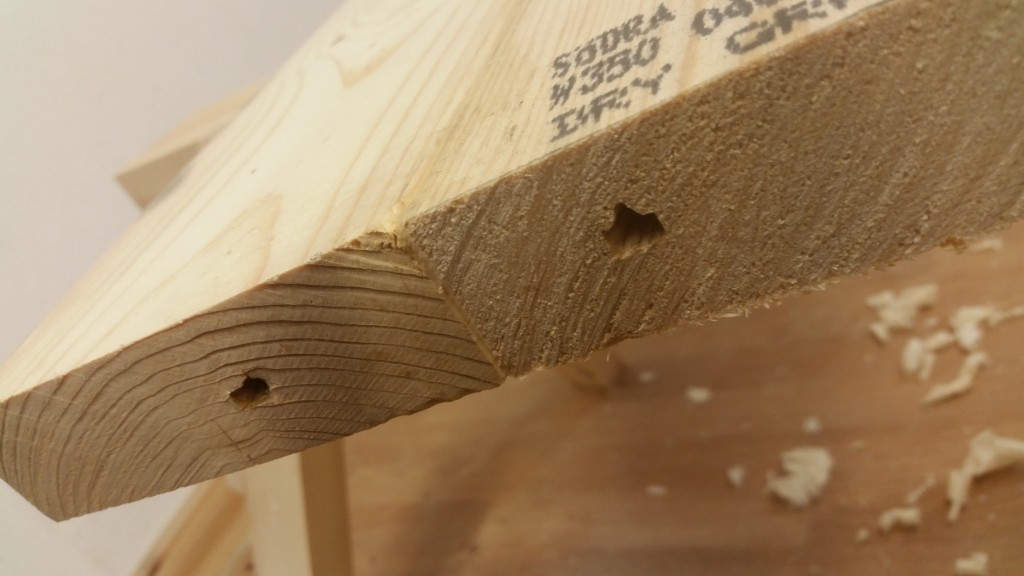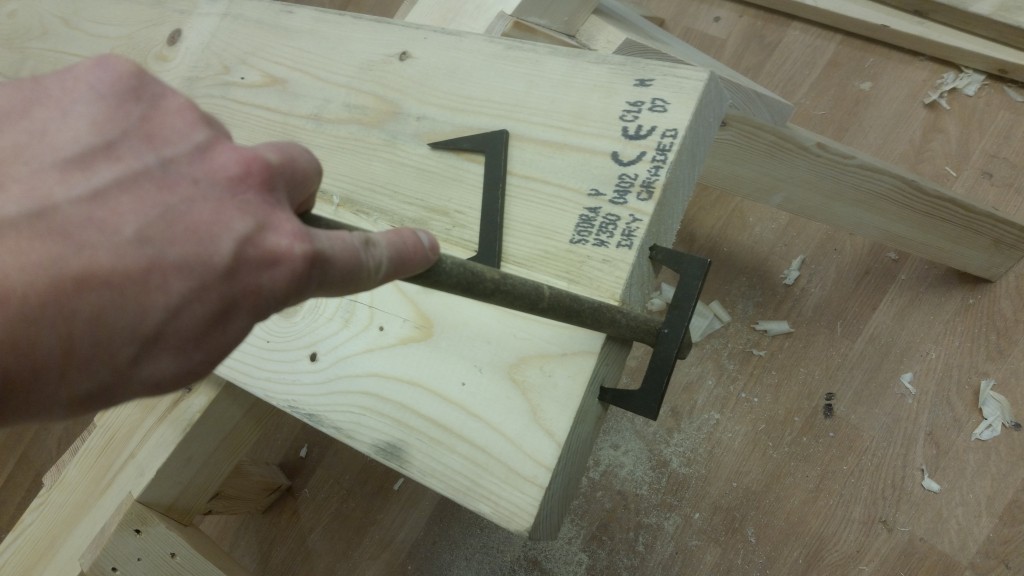We may receive a commission when you use our affiliate links. However, this does not impact our recommendations.

Nail dogs Pin this!
It’s wonderful that so many things within woodworking can be accomplished with such simple principles and relative ease of application. This humble wedging action is a perfect example. Clamping, securing tenons or the angle of a dovetail all have a simple taper at their heart. I’m at the stage of my workbench project where I need to edge glue some boards to make the aprons. It seemed an ideal time to try out some joiner’s dogs.
These handy clamping devices are also known as pinch dogs, nail dogs and doubtless a bunch of other variations. Thankfully they are still readily available and should you be in resourceful mood they’re not too hard to make.
One thing to bear in mind is that they will obviously leave a pair of substantial holes in the end of the boards. A non issue on a workbench project or when a panel would be concealed within a groove or rabbet. If the end grain is going to be exposed you’ll just need to add a little extra to trim.
Then there’s the springing. Unsurprisingly you can go a few ways with this. I’ve set mine with the center touching and the ends open. When the dogs drive the ends close, the center gets really tight. With this method I was able to glue a 6′ length of wood with just a pair of dogs. The amount of spring required is very modest, enough that I could close it with hand or in this case leg pressure!
The other alternative is the more typical, slightly hollow sprung joint and the dogs are just used to keep the ends tight. Both methods work well, just pick one that suits your needs best. I also avoided getting to heavy with driving them in, this leaves enough space to pop the dogs out once the glue has set.
If you’re looking for a simple and effective way to broaden your clamping options a few joiner’s dogs might be just the ticket!
— Graham Haydon
Here are some supplies and tools we find essential in our everyday work around the shop. We may receive a commission from sales referred by our links; however, we have carefully selected these products for their usefulness and quality.










